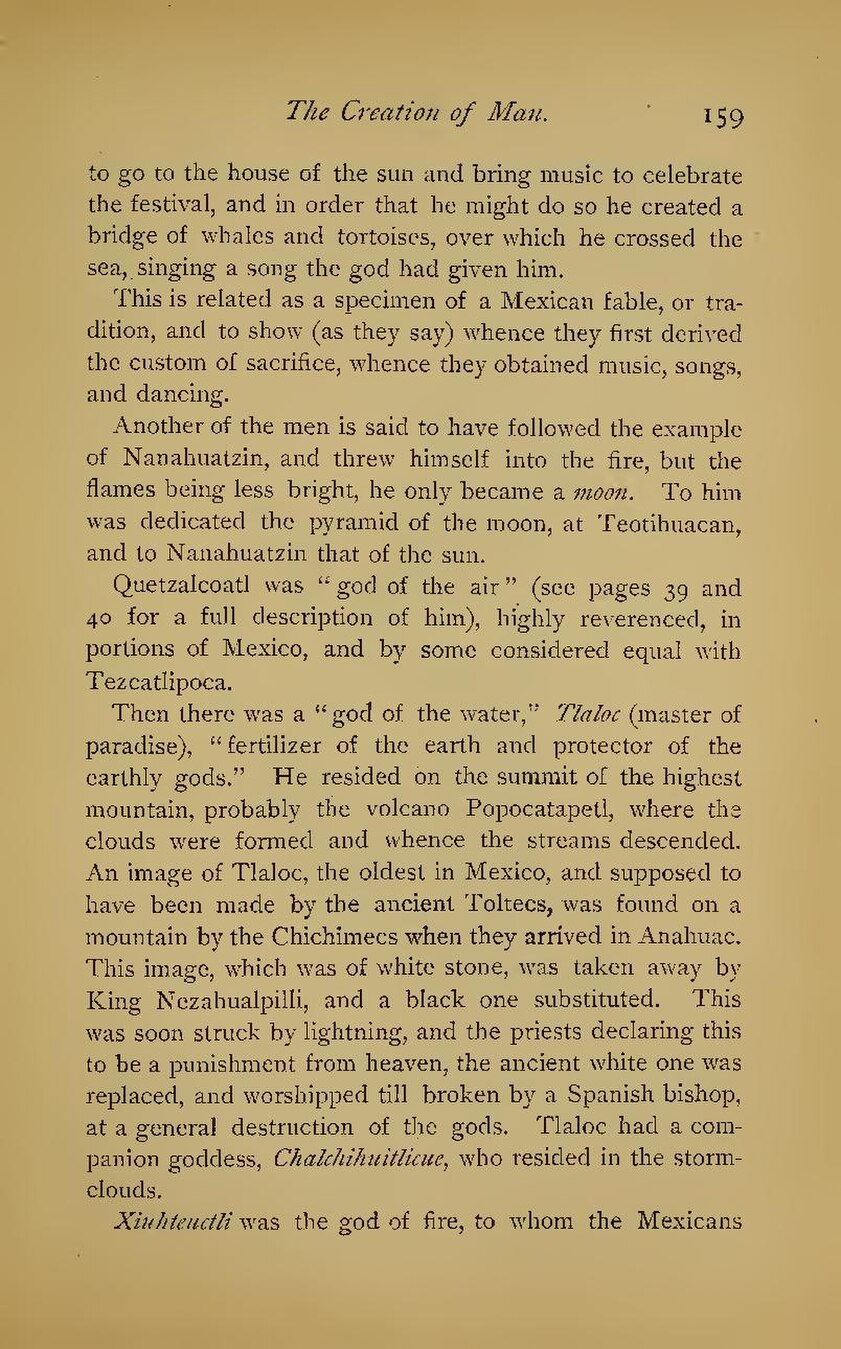to go to the house of the sun and bring music to celebrate the festival, and in order that he might do so he created a bridge of whales and tortoises, over which he crossed the sea, singing a song the god had given him.
This is related as a specimen of a Mexican fable, or tradition, and to show (as they say) whence they first derived the custom of sacrifice, whence they obtained music, songs, and dancing.
Another of the men is said to have followed the example of Nanahuatzin, and threw himself into the fire, but the flames being less bright, he only became a moon. To him was dedicated the pyramid of the moon, at Teotihuacan, and to Nanahuatzin that of the sun.
Quetzalcoatl was "god of the air " (see pages 39 and 40 for a full description of him), highly reverenced, in portions of Mexico, and by some considered equal with Tezcatlipoca.
Then there was a "god of the water," Tlaloc (master of paradise), "fertilizer of the earth and protector of the earthly gods." He resided on the summit of the highest mountain, probably the volcano Popocatapetl, where the clouds were formed and whence the streams descended. An image of Tlaloc, the oldest in Mexico, and supposed to have been made by the ancient Toltecs, was found on a mountain by the Chichimecs when they arrived in Anahuac. This image, which was of white stone, was taken away by King Nezahualpilli, and a black one substituted. This was soon struck by lightning, and the priests declaring this to be a punishment from heaven, the ancient white one was replaced, and worshipped till broken by a Spanish bishop, at a general destruction of the gods. Tlaloc had a companion goddess, Chalchihuitlicue, who resided in the storm-clouds.
Xiuhteuctli was the god of fire, to whom the Mexicans
